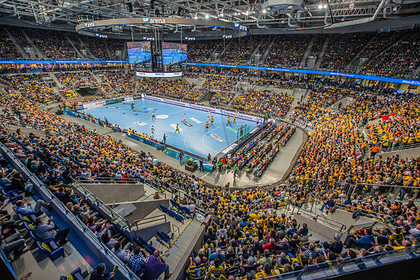Handball
Updated:
7 Sep 2020
Handball (also known as team handball, European handball or Olympic handball) is a team sport in which two teams of seven players each (six outcourt players and a goalkeeper) pass a ball using their hands with the aim of throwing it into the goal of the other team. A standard match consists of two periods of 30 minutes, and the team that scores more goals wins. Modern handball is played on a court of with a goal in the middle of each end. The goals are surrounded by a zone where only the defending goalkeeper is allowed; goals must be scored by throwing the ball from outside the zone or while "diving" into it. The sport is usually played indoors, but outdoor variants exist in the forms of field handball, Czech handball (which were more common in the past) and beach handball. The game is fast and high-scoring: professional teams now typically score between 20 and 35 goals each, though lower scores were not uncommon until a few decades ago. Some players may score hat tricks. Body contact is permitted: the defenders trying to stop the attackers from approaching the goal. No protective equipment is mandated, but players may wear soft protective bands, pads and mouth guards. The game was codified at the end of the 19th century in Denmark. The modern set of rules was published on 29 October 1917 in Berlin, which is seen as the date of birth of the sport, and had several revisions since. The first official handball match was played in the same year in Germany. The sport is most popular in Europe, and European countries have won all medals but one in the men's world championships since 1938. In the women's world championships, only two non-European countries have won the title: South Korea and Brazil. The game also enjoys popularity in East Asia, North Africa and parts of South America.




